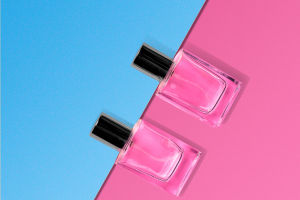Washing your face, a fundamental step in daily skincare, may seem simple, but it conceals many lesser-known details.
Many people make common mistakes when washing their face, which not only fails to achieve optimal cleansing but can also damage the skin. Understanding these mistakes and mastering the correct washing methods are crucial for maintaining healthy skin.
First, over-cleansing is a common issue. Many believe that the harder they scrub their face and the more powerful the cleansing product they use, the cleaner their skin will be. In reality, such practices can damage the skin’s natural barrier, stripping away essential oils and leading to dryness and sensitivity.
Once the skin’s natural barrier is compromised, it becomes more susceptible to external irritants. Therefore, choosing a gentle cleansing product and avoiding over-cleansing is key to protecting skin health.
Choosing the right cleansing products is also crucial. Many people overlook their skin type and choose products indiscriminately. For instance, products with strong cleansing agents can exacerbate dryness in dry skin, while overly moisturizing products can leave oily skin feeling greasy. Understanding your skin type and selecting suitable cleansing products can effectively clean the skin without causing additional problems.
Water temperature also significantly affects the effectiveness of face washing. Many believe that hot water dissolves dirt better, but in fact, excessively hot water can strip the skin of its natural oils and cause dryness and irritation. Using lukewarm water can effectively clean dirt while protecting the skin from excessive irritation.
The duration of face washing is important as well. Washing for too short a time may not thoroughly cleanse the skin, while washing for too long can lead to dryness and irritation. The ideal washing time should be between 30 seconds to 1 minute, using a gentle cleansing product to softly massage the entire face, ensuring every area is cleaned thoroughly but not excessively.
Post-cleansing rinsing also requires special attention. Many believe that as long as there is plenty of foam, the skin is clean, but in reality, residues of cleansing products can lead to skin irritation, allergies, or clogged pores. Using plenty of water to rinse the face thoroughly, and ensuring all cleansing product residues are removed, can effectively avoid these issues.
Lastly, exfoliation is a step that many people tend to overlook. While cleansing removes surface dirt, exfoliation helps remove dead skin cells, making the skin smoother. Regular exfoliation can improve skin texture and brighten the complexion. Choosing the right exfoliation products and using them according to your skin condition is an important aspect of enhancing skincare results.
In summary, the correct washing method not only cleanses the skin but also protects its health. Avoiding over-cleansing, selecting suitable cleansing products, using appropriate water temperature, controlling washing time, rinsing thoroughly, and regular exfoliation are all key to maintaining good skin quality.
By understanding and mastering these techniques, your skin will be fresher and healthier. We hope this article helps you correct common cleansing mistakes and make your skincare routine more scientific and effective.


